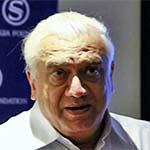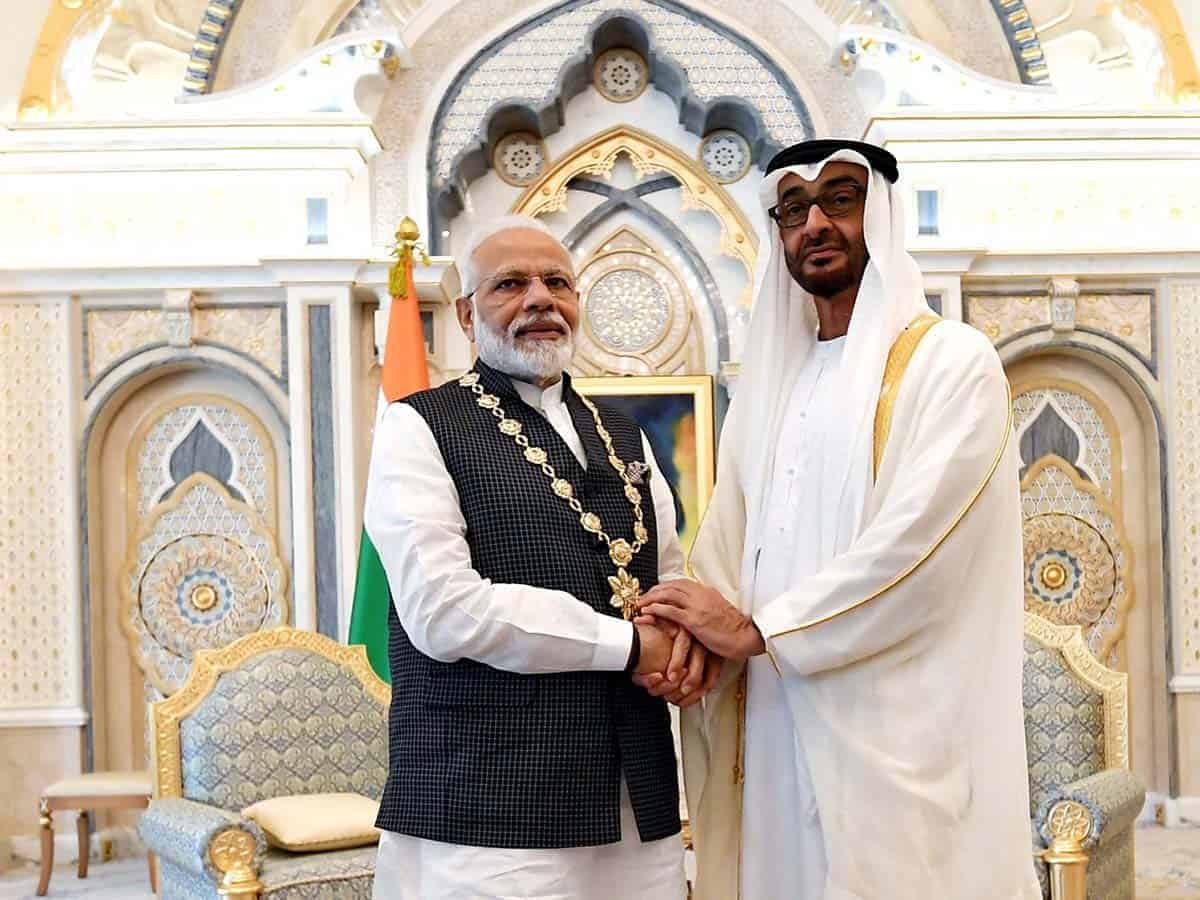This is the Second Part of the article written by Talmiz Ahmad. The first part was published on these pages on April 28(Tuesday).
An accomplished diplomat Talmiz Ahmad is considered an expert on relations between India and Gulf States. He holds the Ram Sathe Chair for International Studies, Symbiosis International University, Pune, and is consulting editor, The Wire. This article was first published by The Wire.

Talmiz Ahmad
Most observers would see these remarks as reflecting little conviction and less enthusiasm. In any case, they are likely to have no impact on his zealous followers. As Nilanjan Mukhopadhyay has pointed out in his article on April 24:
“… his [Modi’s] words … were posted on a platform which is primarily a business and employment-oriented service used for ‘networking’ by professionals.
“The vital question is, was this message intended for his supporters who have been fanning hatred towards Muslims or was it just to put it on record that the prime minister was opposed to religious profiling of coronavirus patients? Modi’s messaging is odd on two counts. One, if this is indeed aimed at signalling to the proverbial bhakts or blind supporters, Linkedin was not the appropriate platform to convey. Secondly, the smear campaign does not contend that the virus ‘chooses’ victims on basis of their religious identity and instead depicts Muslims as the chief and willful carriers of the pandemic in the country.”
Why this intervention can be seen as half-hearted is because the hate campaign against Muslims on social media has been rampant within the country for a few years, but it has only now seriously entered Gulf consciousness, with Twitter traffic today consumed by the Hindutva narrative and Gulf nationals expressing their sentiments vociferously. This has also provided a great opportunity for Pakistani agencies to join the anti-India discussion with fake messaging, though, of course, their task is facilitated by the relentless abuse concocted and proliferated by Hindutva zealots.
Demonising Muslims by blaming the Tablighi congregation as being primarily responsible for the spread of the virus in India became central to the Hindutva narrative from late March itself, with mainstream Indian media an enthusiastic accomplice.
Figures from official sources were quoted to show how the Tablighis, returning home after their congregation in Delhi, had spread the disease. To this were added stories of their misbehaviour and misconduct – walking without trousers in hospital wards, making vulgar advances at nurses, throwing vegetarian food, defecating in wards, and deliberating spitting into food to spread the virus. These reports pandered to the traditional caricature of the Muslim in Hindutva lore – dirty, lascivious, uncouth and very malevolent and dangerous.
Senior political leaders publicly spoke of Muslims as “human bombs” and “enemies of humanity” – “Corona jihad” and “Muslim virus” have entered the national vocabulary and stayed in the mindset.
And, all of this was fake. Stories of Tablighi misconduct were later denied by officials, but without the vehemence and enthusiasm with which they had first emerged. The story of the figures of contamination by the Tablighis is even more interesting. Irena Akbar has explained how this was done; she has pointed out: “If many positive cases from March 29-30 onwards are linked to the Tablighi Jamaat, it’s because its members and their contacts are being rightly but selectively tested while the overall testing remains abysmally low.” She refers to this as “sampling bias”.
Recognising the need for more effective damage-control, external affairs minister S. Jaishankar personally intervened in the imbroglio: on April 23-24, he spoke to his counterparts in the UAE, Qatar, Oman and Saudi Arabia. According to press reports, he assured his interlocutors that India would continue to provide food supplies during the holy month of Ramadan and would make available the medicines required to fight the pandemic. Reports on television said he affirmed India would remain committed to its “Look West” policy.

India-Gulf relations
The Gulf countries have now for the first time woken up to the scourge of extremist Hindutva to which they had so far paid little attention. It will come as a surprise to Hindutva cadres that, despite periodic rhetoric, faith has hardly played any role in determining the direction and strength of the Gulf countries’ ties with India. Through the Cold War, the GCC countries were tied to Pakistan politically and militarily not because it was a Muslim country, but because they were allies on the same side of the global divide, their ties being cemented by their shared affiliation with the US.
After the Cold War, the Arab Gulf nations, united in the GCC, stretched out their hand to India when we had a BJP government led by Prime Minister A.B. Vajpayee. The visit to Riyadh of external affairs minister Jaswant Singh in January 2001 marks the commencement of fresh political relations, symbolically strengthened by the gift of two Arabian horses to the Indian minister. Prince Miteb bin Abdullah, the son of Crown Prince Abdullah, told Jaswant Singh what his father had said to him: “I like the minister. He is honest; he is a Bedouin like us.”
Indo-Saudi strategic energy ties evolved to a “strategic partnership” after the Mumbai attack of November 2008 which had clearly revealed Pakistan as the nursery and sanctuary of extremist violence. This was enshrined in the “Riyadh Declaration” signed by Prime Minister Manmohan Singh and King Abdullah bin Abdulaziz in February 2010.
Over the last six years, Prime Minister Modi has built on these foundations with a focus on taking these relations to new heights. These relations flow from the millennia-old engagements that India has had with West Asia. Every joint statement concluded during Modi’s interactions with Gulf leaders recalls the age-old civilisational links between India and the Gulf, as also their shared views and concerns relating to the regional security scenario.
Thus, the India-UAE joint statement of August 2015 noted the “centuries-old ties of commerce, culture and kinship” shared by India with the UAE, and then celebrated their modern-day partnership to help “realise the vision of an Asian Century”. In the joint statement with Saudi Arabia of April 2016, the two countries recognised “the close interlinkage of the stability and security of the Gulf region and the Indian sub-continent”. In the later joint statement of February 2019, India welcomed the “moderation and openness” being pursued by the Saudi crown prince in his country, while the latter appreciated “the Indian model of ethos of inclusiveness, pluralism and tolerance”.
The India-Oman statement of February 2018 noted “the historically close bilateral ties, involving vibrant maritime trade and cultural exchanges” that had been fostered by the Indian Ocean and the Arabian Sea, and had opened opportunities for a “strategic partnership based on trust and mutual respect”.
The ties fostered during Modi’s prime ministership have gone beyond rhetoric to concrete deals. Both the UAE and Saudi Arabia have offered to make major investments in India, amounting to $70 billion and $100 billion, respectively, to develop India’s infrastructure and the energy and industrial sectors. Investments of a few billion dollars have already been made in specific projects.
The countries have also manifested their personal regard for the Indian prime minister by bestowing high awards upon him: the UAE conferred on him the “Order of Zayed”, its highest civilian award in August 2019; it had first announced the award in February, in the midst of the general elections, making clear its support for him. In August, he also received the “The King Hamad Order of the Renaissance”, Bahrain’s highest civilian award. Earlier, in April 2016, the Saudi ruler conferred on him its highest award, “The King Abdulaziz Sash”.

Historical links
Hindutva zealots, blinded by the religious binary, seem largely unfamiliar with the 5000-year heritage that has bonded the Indian and West Asian civilisations and peoples – an engagement that has been uninterrupted, has been rarely influenced by considerations of faith and has been constantly refreshed to impart contemporary value to the relationship.
There is archaeological evidence on the links of the Harappan civilisation with Bahrain and Oman, with India providing cereals, textiles and items of gracious living, items which dominate India’s export basket to this region even now. Later, India had close maritime ties with Assyria, Persia and Egypt, and, through Arab merchants, with the Roman empire. For 2000 years before the advent of Islam, Indian and Arab peoples lived for long periods in each other’s lands and were familiar with each other’s religion, culture, social norms and values and way of life.
After the advent of Islam, the Arabs first encountered India militarily with the invasion and occupation of Sindh in 718-800 AD. While this had little significance politically, its cultural impact was profound; Malik Mohammed says: “The Arabs … were astonished at the superiority of [India’s] civilisation. The sublimity of Indian philosophical ideas and the richness of the Indian intellect were a strange revelation to them.” (The Foundations of the Composite Culture in India, Aakar Books, 2007, p. 58.)
Ancient Indian works in the areas of medicine, astronomy and mathematics was translated from Sanskrit into Arabic. These included: Arthashastra, Sidhandha Charaka Samhitha and the Panchatantra. In the reign of the Abbasid caliph Mamoon (813-33 AD), the mathematician Al Khwarizmi (780-840) adapted Sanskrit numerals into Arabic mathematics.
Arabs came to southern India as merchants and travellers and were warmly welcomed by local rulers. The Arab traveller Ibn Batuta (1304-77), during his travels along India’s western coast, saw several Muslims from Persia and Yemen living in prosperous conditions.
Between the 8th and 15th centuries, there were considerable cross-religious influences, particularly with the initiation of reform movements by Vaishnava and Shaivite saints. The scholar Dr Tarachand has written: “[It was in the south where] Islam came into contact with Hinduism and leavened the growing mass of Hindu thought.”
This was reflected in the thinking and speculations of sages such as Ramanuja, Vishnuswami, Madhava and Nimbarka in the 12th and 13th centuries whose thought reflected a “closer parallelism” with Islam. Tarachand notes the following influences from Sufism: emphasis on monotheism; emotional worship; self-surrender (prapatti) and veneration of the teacher (guru-bhakti); loosening of the caste system, and indifference to mere ritualism.
Indian communities have been resident in the Gulf for at least the last millennium; there are records of Indians from Kutch residing in Muscat for the last 600 years. From the 15th century, it had colonies of Bhatias from Thatta, who were later followed by Kutchi Bhatias and Khojas from Sindh, known in Oman as Lawatis. A Kutchi merchant, Narottam, is believed to have supported an Omani uprising against the Portuguese in 1649; his descendants are honoured in Oman to this day.
In 1765, the Dutch explorer Carsten Niebuhr wrote of Muscat thus:
“In no other Mahometan city are the Indians so numerous as in Muscat; their number in the city is no less than 1200. They are permitted to live agreeable to their own laws, to bring their wives hither, and to set up idols in their chambers, and to burn their dead.”
To be continued

